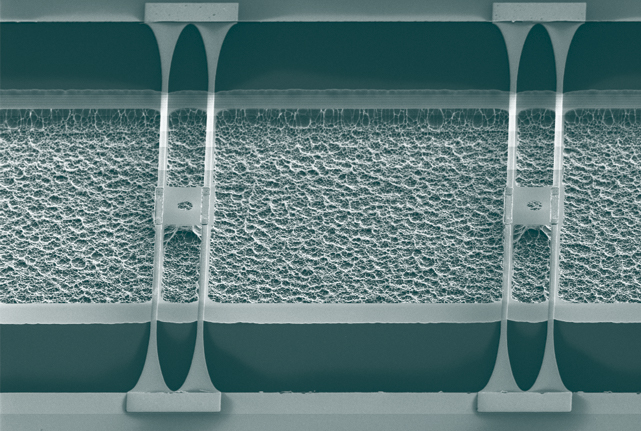- Accueil
- Institut Néel
- Équipes de recherche
- Pôles & Services techniques
- Travailler à l’institut
- Partenariats
- Actualités
- Agenda
- Annuaire
Un meilleur contrôle et une meilleure gestion de l’électricité sont nécessaires pour accroître son efficacité et sa fiabilité. Les avancées que l’on peut attendre sont liées aux progrès des matériaux pour sa production, son transport et sa conversion, ainsi qu’à son stockage qui est aujourd’hui son maillon le plus faible.


Magnetic materials (« hard » magnets, « soft » iron alloys) are core to electromechanical conversion systems, and determine their efficiency. NEEL develops new concepts and novel materials, in partnership with industrials (ArcelorMittal, Metalor, Toyota…).
Magnetocaloric and thermoelectric materials are exploited in pioneering cooling systems and thermal energy converters, in collaboration with ArcelorMittal, Cooltech Applications, McPhy Energy SA, Scheider Electric. The « multiferroic » coupling of piezoelectric, magnetostrictive and shape memory materials is also explored in novel actuators, smart energy harvesters and power-MEMS.
Zero-loss transportation cables are being developed in collaboration with Arcelor-Mittal, based and patented solutions using high temperature superconductors. Targeted applications also concern energy storage for pulsed sources and fault current limiter for smart grid.
Hydrogen (H2) is an attractive clean energy carrier for portable power and transportation applications (fuel cells). Our research activity, in close collaboration with INAC and LITEN and companies (McPhy, Axane, Hélion, Nissan,…) concern materials and systems for H2 solid storage (our prototypes already meet the American DOE target for 2015, start-up McPhyEnergy, 5 CNRS patents).
Nanotechnology provides a key to boost the performance of light conversion, with nanoparticles and nanostructures improving both collection and conversion, together with providing better thermal storage and transport. They open new paths for a variety of applications including energy generation and harvesting, laser and light emitting diode (LED).
Diamond is the « ultimate » semiconductor, exhibiting high breakdown voltage, ultra-fast commutation times with low losses for communications, and superb thermal conductivity. We recently demonstrated 10 kV diamond rectifiers and MOS structure (patented).
